Maintaining the outside portion of your copper radiator pipes can be tricky, especially when you coated it with paint. If you're having difficulty getting rid of the paint from the copper radiator pipes, we've researched the best options for you, so you don't have to!
To remove the paint from copper radiator pipes, you can use any of the following:
- Olive oil and mineral spirits
- Acetone
- Nitromors All-Purpose Paint and Varnish Remover
- Sandblasting
- Paint thinner
In this post, we delve into further details about how to get rid of old paint from copper radiator pipes. If you want to know more about this topic, keep reading for step-by-step guides you can follow.
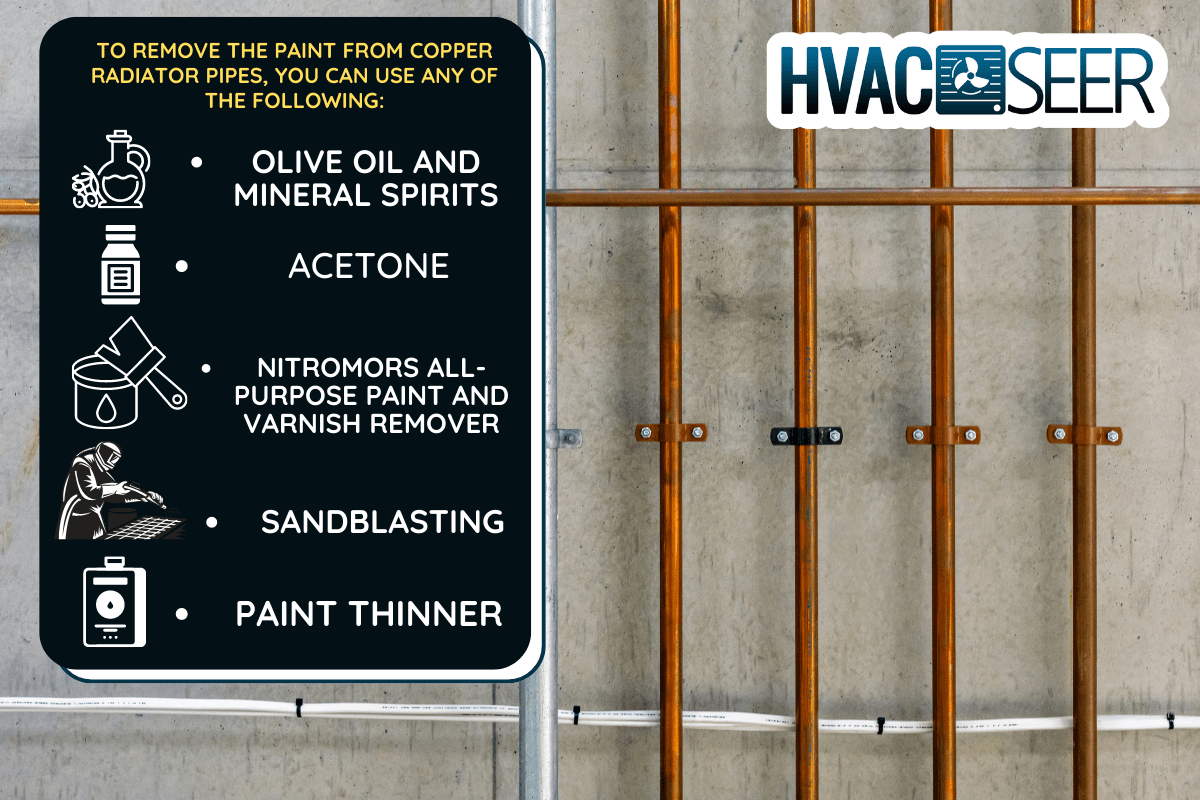
How To Remove Paint From Copper Radiator Pipes?
Although copper is noncorrosive due to its natural protective film, painting copper radiator pipes will help prevent the pipes from ruining the view.
However, if you're planning to remove the paint from the copper pipes, here are the ways to do it without damaging the pipes.

Use Olive Oil and Mineral Spirits
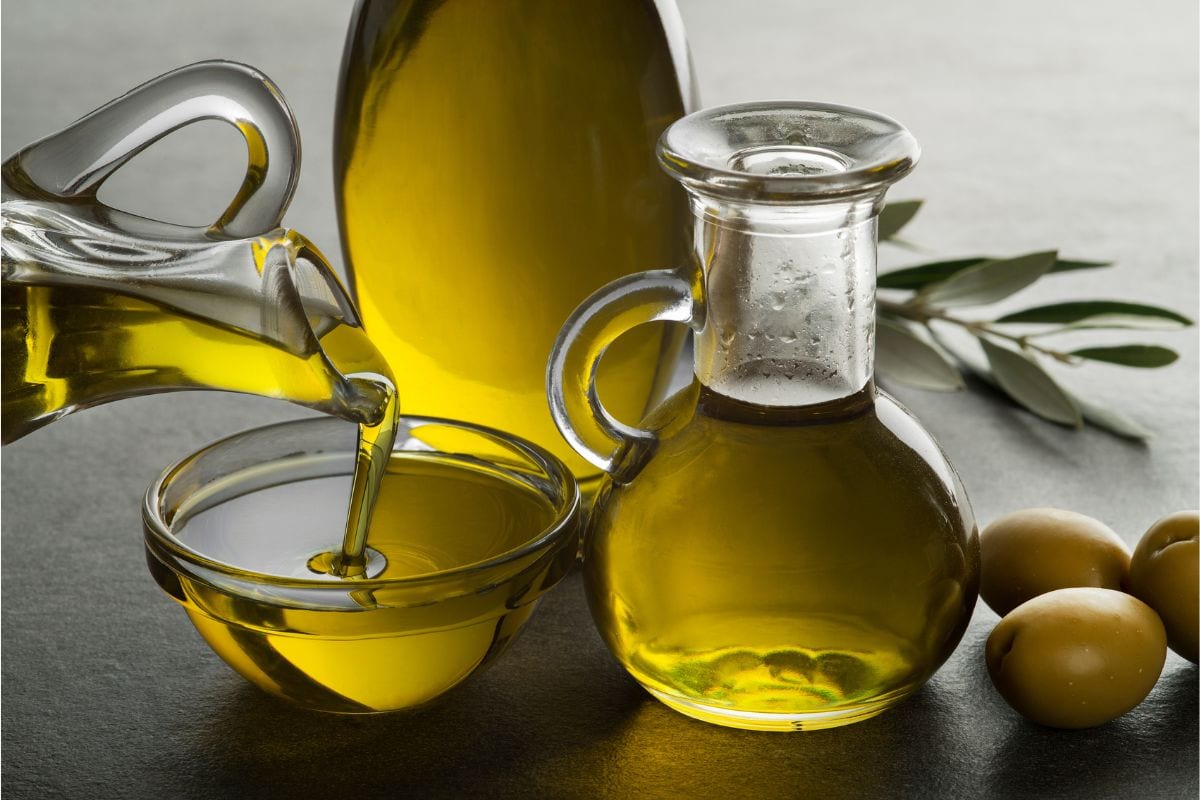
Did you know that you can use materials found in your kitchen to remove paint from copper generator pipes? Olive oil is a good lubricant that can help soften the paint so you can remove it without causing the pipes any damage.
For this method, you will need:
- Olive oil
- Mineral spirits
- A clean piece of rag
- Plastic putty knife or scraper knife
- Terry cloth rag
Here is a step-by-step guide to doing it.
- Apply ample olive oil to the paint and leave it for at least one minute.
- Wrap a clean piece of rag on a plastic scraper knife.
- Scrape the paint off of the pipe.
- Apply mineral spirits to the rag.
- Scrape the remaining paint using the rag that's dampened with mineral spirits.
- Wipe the pipe cleaner in a circular motion using a terry cloth rag.
Use Acetone
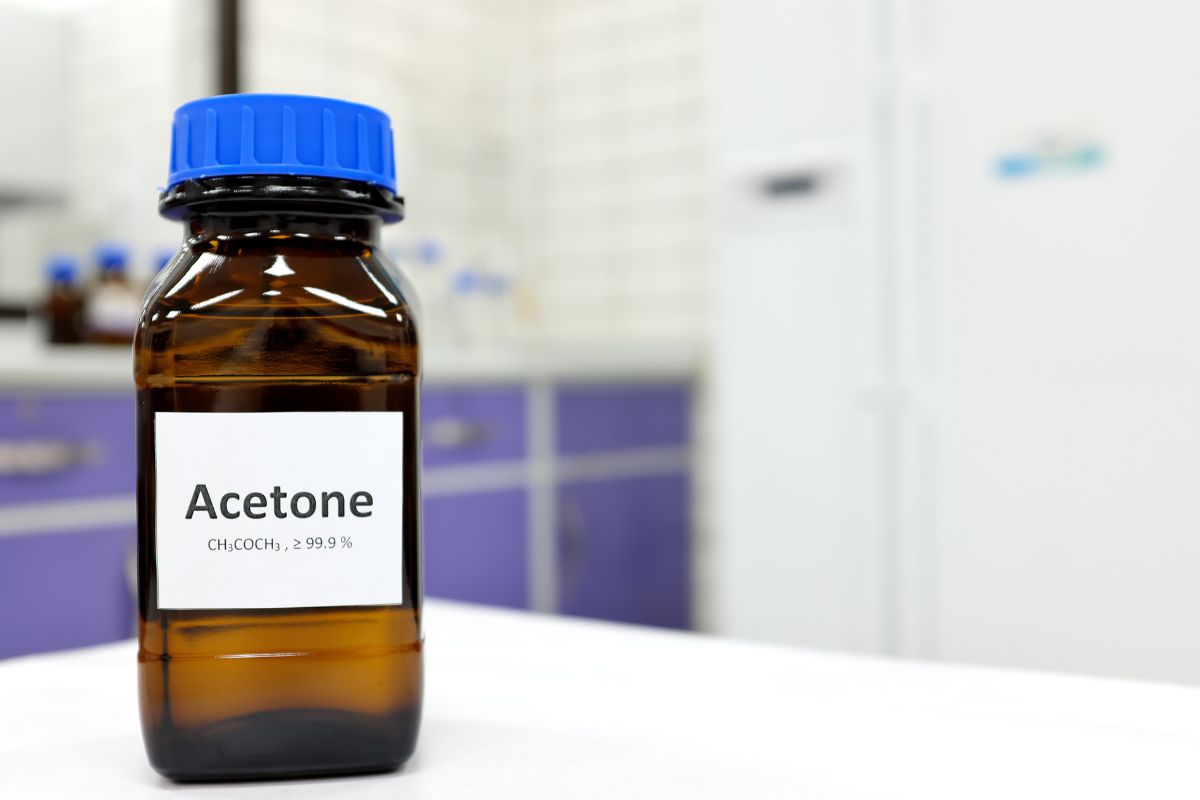
You've probably heard the word "acetone" from your manicurist when you're having your nails done, and your manicurist uses acetone to remove the polish on your nails. But did you know that you can also use acetone for a different purpose?
Another effective way of removing paint from copper radiator pipes is using acetone. Acetone is an organic compound that can dissolve other substances like paint.
Just as it breaks down and dissolves your nail polish, acetone also helps get rid of dried paint!
To use acetone in this method, you will need:
- Acetone
- Plastic wrapper
- Clean cloth
Here is a step-by-step guide that you can follow.
- Apply the acetone to the paint's surface and let it sit for 10-15 minutes.
- Prevent the acetone from evaporating by wrapping the pipes with a plastic wrapper.
- Once the acetone successfully has dissolved the paint, wipe the pipes with a clean cloth.
- Repeat the process if areas on the pipe are still covered with paint.
Use Nitromors All-Purpose Paint and Varnish Remover
Nitromors All-Purpose Paint and Varnish Remover is a chemical-based product you can buy and use to remove paint from your copper generator pipes. It works well on wooden and metal surfaces without damaging the surface when applied correctly.
To use Nitromors, you will need:
- Nitromors All-Purpose Paint and Varnish Remover
- Protective gloves
- Protective glasses
- Paintbrush
- Scraper
- Cold water mixed with detergent
- Sandpaper
Before we proceed to the instructions, please be advised that there are a few precautions to take when using Nitromors All-Purpose Paint and Varnish Remover:
- Never use the product under direct sunlight
- Only use it outside if possible
- If you have to use the product indoors, good ventilation is a must
- Use protective gloves when using this product
When done preparing everything that you need, you can follow this step-by-step guide:
- Wear your protective gloves and glasses.
- Remove the overcap and fill it with Nitromors. Don't forget to find a substitute cover for the container while using the overcap in this process.
- Dab 2-3mm Nitromors on the paint's surface.
- Leave for 5-10 minutes until blisters appear on the pipe's surface.
- Apply a second coat and leave it for another 40 minutes.
- Scrape the blistered areas using a scraping tool.
- Repeat the process above until you get rid of all the stubborn paint.
- Wash the areas with cold water mixed with detergent and let the surface dry.
- Once dry, sand the surface using sandpaper to give it a polished look.
Click here to see this copper generator on Amazon.
Use Sandblasting
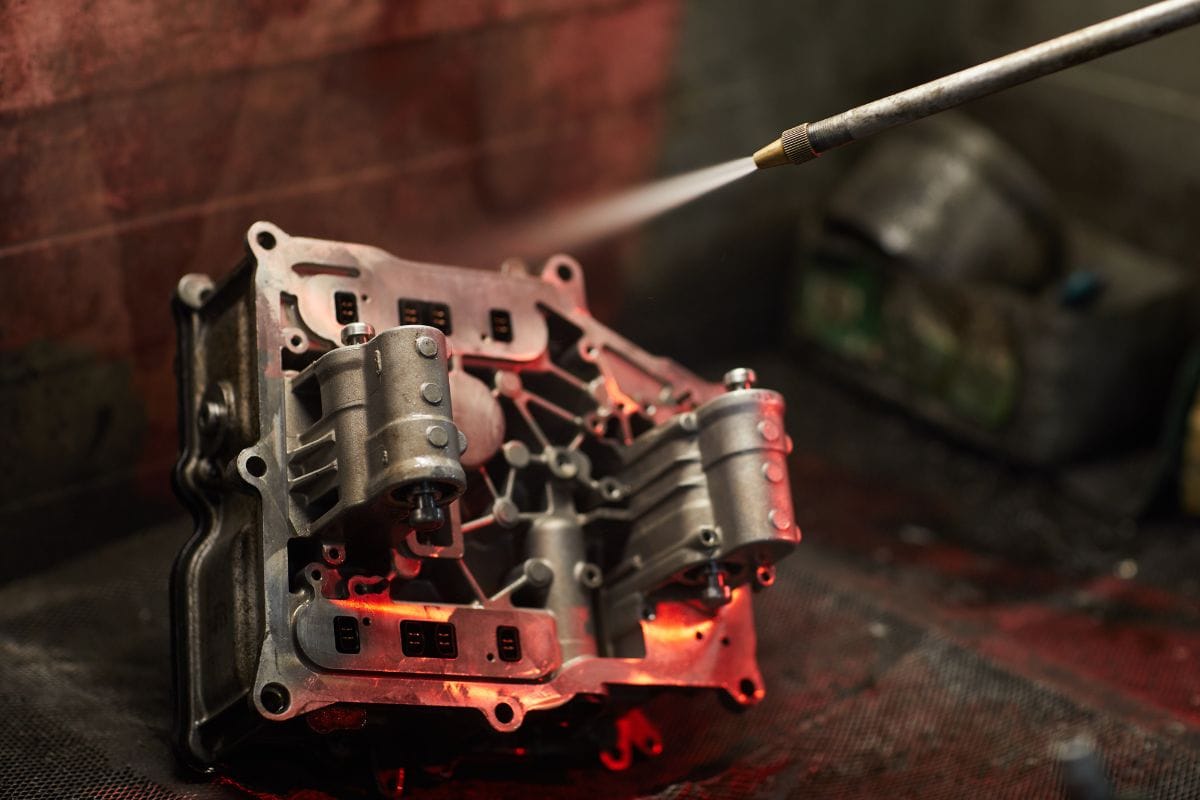
Also known as abrasive blasting, sandblasting is a surface cleaning process that you can use to remove paint with the help of a machine.
This method works by putting the sand particles into the machine you will use. After pouring the sand into the chamber, the machine will be connected to a conventional air compressor.
The sand gets propelled and blasted against the surface of the pipe until the paint is removed.
This method is not recommended on thin copper pipes, because it can cause damage to the copper's surface.
Use Paint Thinner
If you used oil-based paint before to coat your copper generator pipes, you could use a paint thinner to remove it. Paint thinner is an oil-based chemical solvent usually used to clean paint brushes and paint stains.
Unlike acetone, which works even after the paint dries up, you can only use a paint thinner as paint remover if the paint is still wet, despite paint thinner having acetone as one of its components.
Click here to see this copper pipe on Amazon.
What Kind of Paint Can You Use On Copper Pipes?
Painting copper pipes can help them last longer, especially when they are exposed to other elements such as rain and extreme heat, but you have to ensure that the paint you will use will bond with the copper pipes' surface.
The best paint to use on copper pipes is architectural enamel paint. Enamel paints are air-dry paints that are used as a protective coating to surfaces that can be exposed to extreme temperatures.
Using an enamel primer will help, too, to help give the paint an excellent adhesion to the surface of your copper pipes.
Can You Use a Spray Paint On Copper Pipes?
Yes, you can use spray paint to coat your copper pipes. However, keep in mind that oil-based materials are designed for surfaces like copper, so if you use spray paint, choose an oil-based paint for it to bond well to the copper pipes.
In addition, the best time to apply spray paint on your copper pipes is during the warmer seasons, so the weather can help the paint to dry faster.
Are Copper Pipes Safe To Be Used As Pipes For Drinking Water?
Although copper may leave a greenish blue stain on the pipes, it does not cause any harmful effects on the water. Copper is safe to be used as pipes for drinking water since it doesn't cause a foul odor nor change the taste of the water.
Copper is also non-corrosive; the water from copper pipes is still safe to drink.
Are Copper Pipes Better Than PVC Pipes When Used For Water Piping?
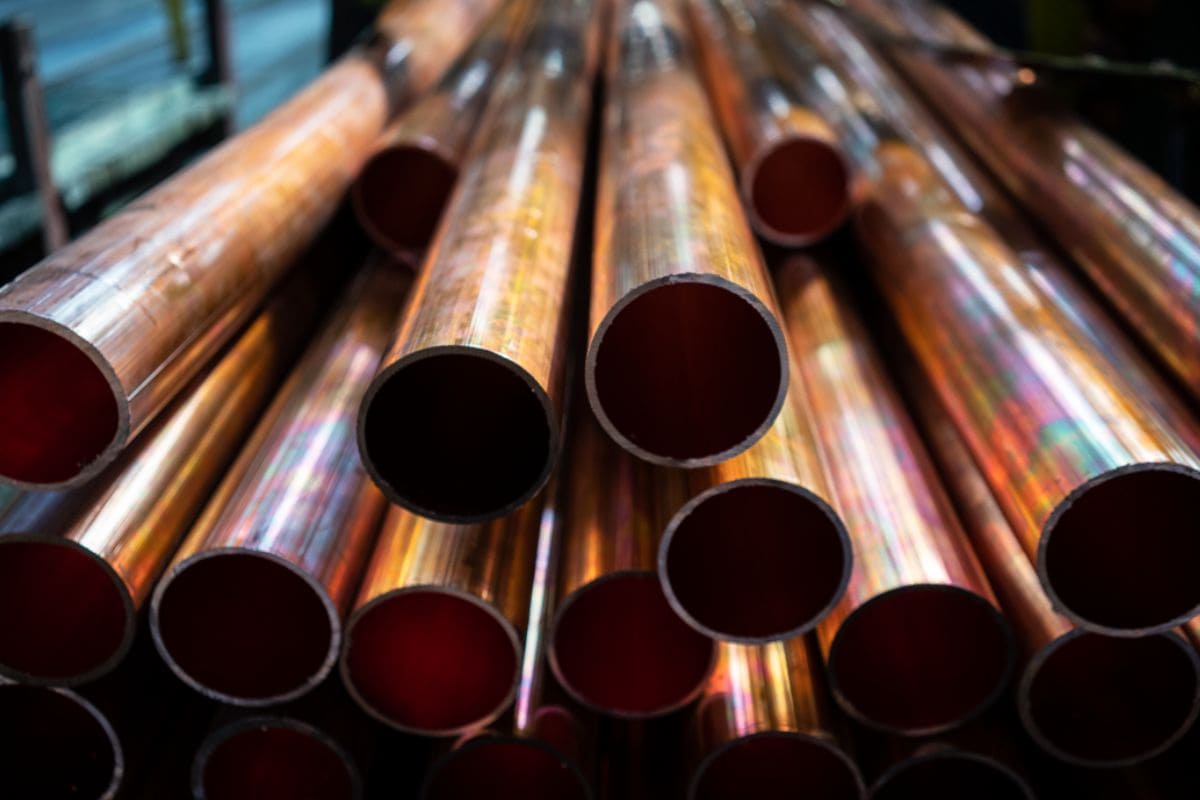
Copper lines do not corrode. As long as the water running through the pipes is not acidic, copper pipes can last longer than PVC pipes. On top of that, it is safer to use water piping because it does not produce chemicals in your drinking water.
On the other hand, it is not recommended to use PVC pipes or polyvinyl chloride pipes because it contains components that are not safe for drinking water. PVC can be used for other plumbing needs, such as sewage and drainage systems.
Wrapping It Up
Getting rid of old paint on your copper generator pipes can be a bit challenging, but using the correct methods can strip off those old paints so you can give your copper generator pipes a fresh look.
Just don't forget to take precautions when using the methods given in this article. Your health is essential, so ensure you only work with chemicals or solvents in a safe space with proper ventilation.
If you think you're not well-equipped yet or the materials you have to use can cause you health hazards, it wouldn't hurt to seek a professional's help instead.
Before you go, don't forget to check these posts, too!


